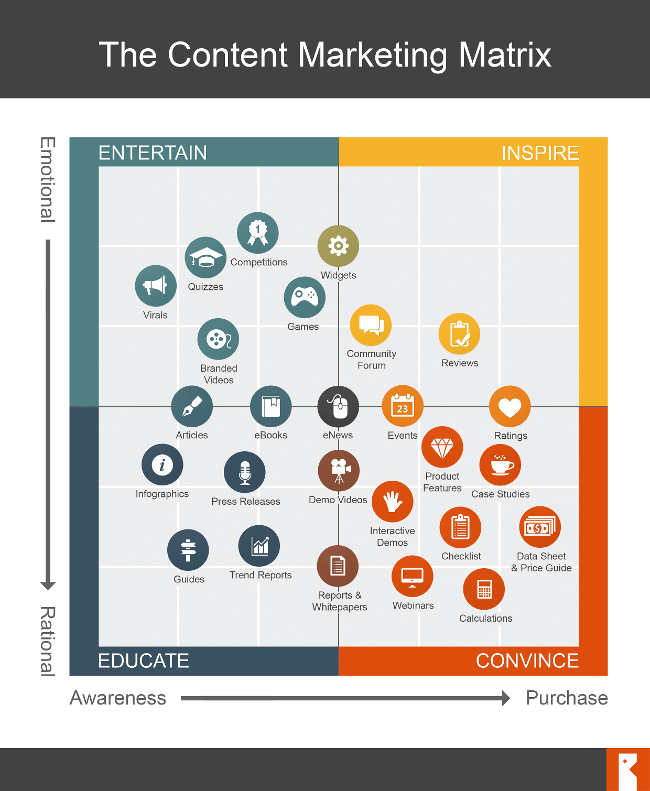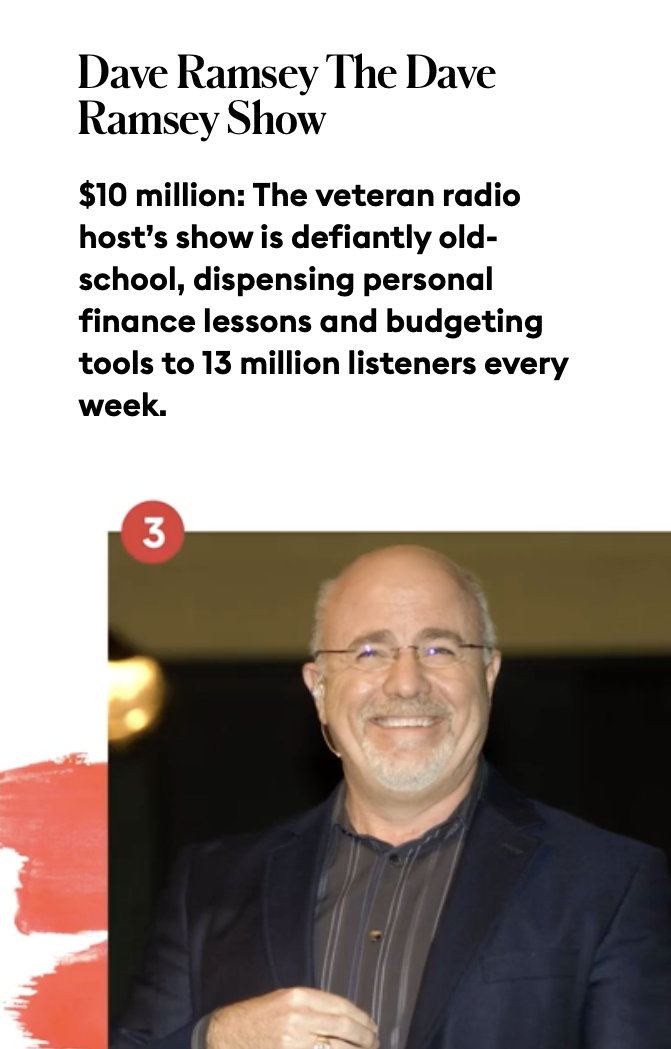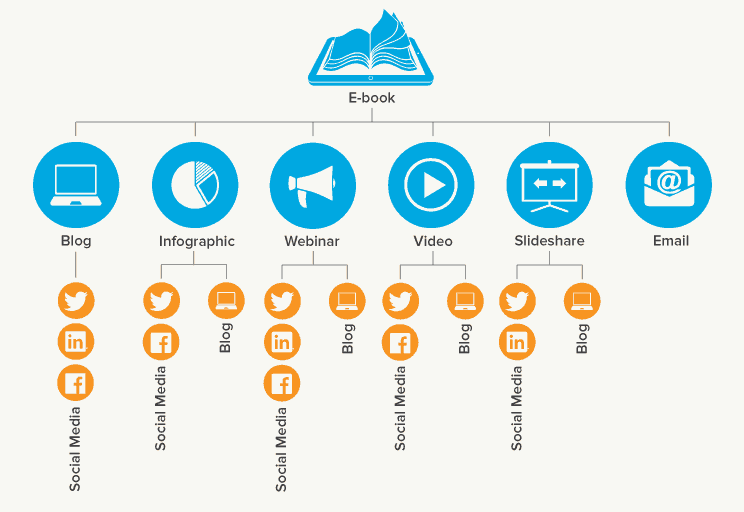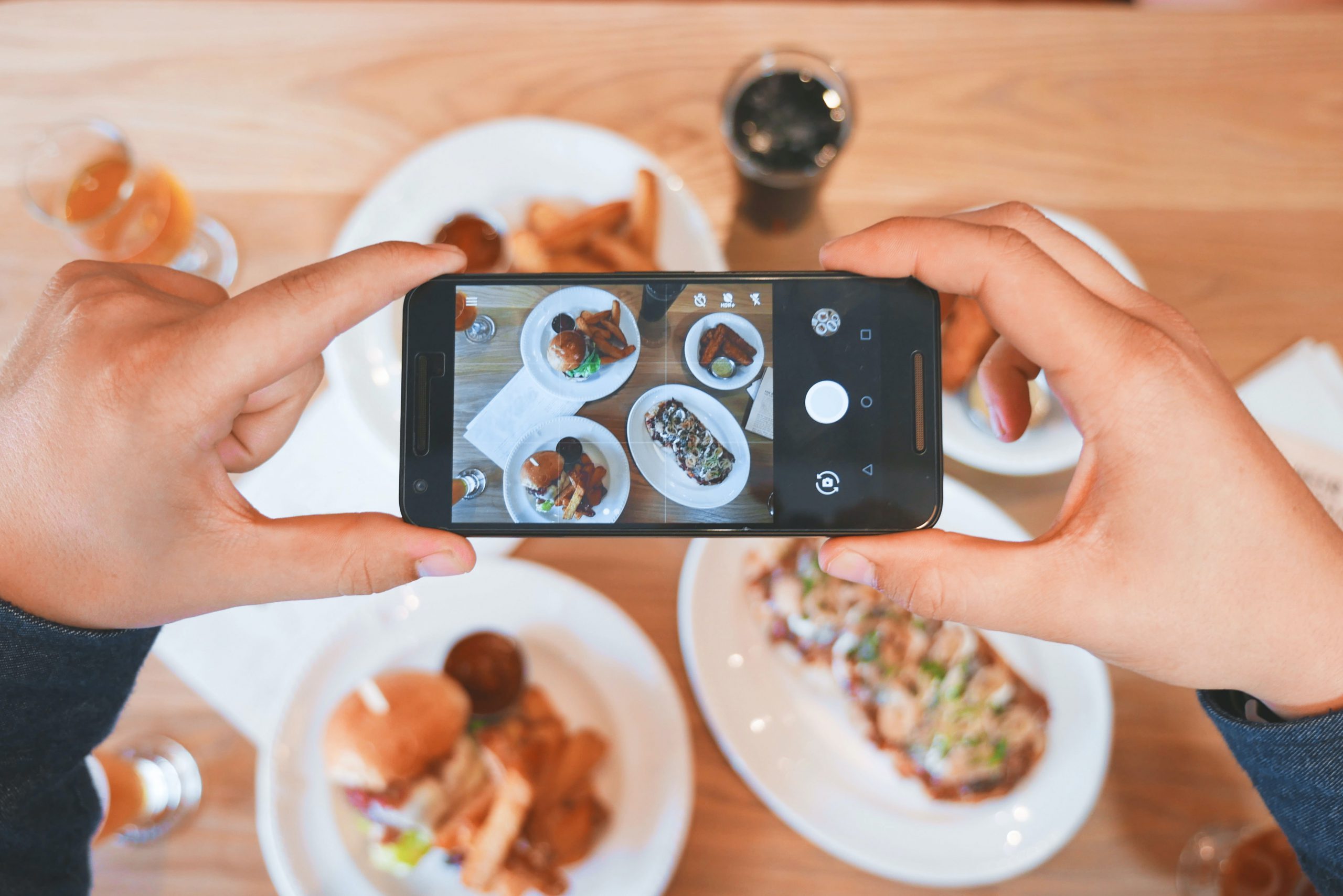Bill Gates’ 1996 essay called “Content is King” predicted that opportunities abound online for those who generate content. At a time when the number of Internet users was just beginning to grow, Gates saw the similarities between the Internet and the broadcasting industry. “The long-term winners [in the broadcast industry] were those who used the medium to deliver information and entertainment,” he wrote.
He emphasized, however, the more democratic nature of the Internet as compared to broadcasting: “One of the exciting things about the Internet is that anyone with a PC and a modem can publish whatever content they can create. The Internet also allows information to be distributed worldwide at basically zero marginal cost to the publisher.”
Today, twenty-five years later, the reign of content continues. Those engaged in online marketing campaigns and SEO still defer to the centrality of content.
These days, content involves a colossal list of everything from infographics, memes, videos, product reviews, how-to guides, blog posts, guest posts, vlogs, newsletters, interviews, image galleries, client testimonials, Q&A, e-books, GIFs, comics/cartoons, podcasts, Google Chrome extensions, slideshows, online games, timelines, free and paid tools, templates, posts on Pinterest or Instagram, maps, news releases, quotes, inspirational messages, PDFs, white papers, mobile apps, podcasts, webinars, and polls.
Content has rich potential to generate new leads and conversions, increase traffic, and improve brand awareness. Used correctly, it helps establish oneself as an expert in a particular subject matter and aids in acquiring and retaining customers. It improves your SEO ranking and sales metrics or key performance indicators (KPIs).
To be sure, there have been substantial disruptions in the Internet landscape over the years. Even Gates could not have predicted each and every content type that exists today. Some of the more significant changes include the implications of social media algorithms, improvements in the mobile infrastructure, and the increased popularity of smartphones, among others.
That said, the basic premise remains. With an estimated 4.57 billion people around the world using the Internet in 2020—close to 60 percent of the global population—plenty is up for grabs for those who are willing to put in the work.
Canva, a graphic design platform for digital content, has been leveraged by millions of content marketers today. In its first two years, it was averaging more than 100K sign-ups in a month. Last valued at $15 billion, it now has over 50 million users.
Aim for high-quality content
To harness the power of content marketing in 2021, one has to be smart and strategic. It is no longer enough to churn out just any content or strings of keywords. To stand out from the pack, aim for high-quality content.
Currently, there is no one template or definition for what high-quality content is. However, in general, high-quality content is marked by several qualities:
- uniqueness or originality
- informative
- credible
- entertaining
- well-structured or free of errors
It is one that your audience values, and therefore requires a deep understanding of your demographics. It is marked by authority and expertise in your field or niche, otherwise known as thought leadership. Consider sharing unique perspectives, tips, experiences, and resources, as these will contribute to building authenticity and loyalty. Try sharing personal narratives, counter-narrative opinions, industry analysis, and data storytelling. Be guided by previous data to figure out what kind of content can gain traction, which does not.
Podcasts, Youtube, LinkedIn webinars are some of the channels used today to establish thought leadership in the digital space. Image Source: Forbes
Be open to new kinds of content; repurpose
Consider also using different kinds of content, such as the ones previously mentioned, to maximize opportunities. Try being open to alternative ways of engaging with your audience, especially the currently popular ones.
You may also repurpose content as an organic way to build your brand and establish a cohesive voice and experience.
A sample execution on how to repurpose content on social media. Image Source: Evergreen Feed
Repurposing content means finding previously shared content and sharing it again. Your best bet would be to identify which of your previous content is evergreen—that is, which remains fresh and relevant in relation to your current goals. You may also make edits and tweaks to old content to make it appear new again. Alternatively, present the old content on a new platform or using another medium like video or infographic.
Leverage user-generated content
User-generated content refers to content created by users of a certain brand or platform. These include blog comments, testimonials, Instagram stories, and customer-submitted photos, among others. These kinds of content are seen to genuine and unbiased, and therefore do wonders to boost a brand’s approachability and authenticity.
Millennials and GenZers, in particular, are believed to put a premium on authenticity in decision-making, showing a stronger preference for brands that resonate with their concerns and interests.
User-generated content also encourages interaction with users, contributing to a sense of community and belonging. Further, since such content is often voluntarily provided by customers, they can often be free, or at least costs as much as one is willing to pay. When such content is generated through a contest, there is also the added benefit of competition and the thrill of getting a prize.
The rise in social media users led to the coining of words such as ‘instagrammable,’ which means something is visually attractive or interesting such that it lends itself to be photographed and posted on social media. Image Source: Eaters Collective
AI and Machine Learning Content
While acknowledging older marketing strategies, don’t forget to be open to new ones, particularly the recent game-changer that is AI and Machine Learning Content Creation and Strategizing. These new tools can provide your marketing significant competitive advantage by basing decisions and insights on data and not personal biases or gut feel. Concured, Bright Edge, Crayon, and MarketMuse offer AI-powered content research, intelligence, and writing.
Summing up
Content marketing in 2021 is an amalgam of old marketing practices and new technologies. It calls for an understanding of shifting consumer behaviors and the changing contexts. To be on top of the game requires not necessarily following every single trend that emerges but deciding which ones propel your brand’s goals and takes you one step closer to your vision.














